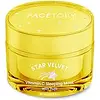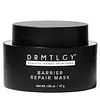What's inside
What's inside
 Key Ingredients
Key Ingredients

 Benefits
Benefits

 Concerns
Concerns

 Ingredients Side-by-side
Ingredients Side-by-side

Water
Skin ConditioningCetearyl Alcohol
EmollientGlycerin
HumectantButylene Glycol
HumectantGlyceryl Stearate
EmollientCetyl Ethylhexanoate
EmollientButyrospermum Parkii Butter
Skin ConditioningPolyglyceryl-3 Methylglucose Distearate
EmulsifyingSimmondsia Chinensis Seed Oil
EmollientDimethicone
EmollientSorbitan Sesquioleate
Emulsifying1,2-Hexanediol
Skin ConditioningSodium Hyaluronate
HumectantHippophae Rhamnoides Fruit Extract
Skin ConditioningBetaine
HumectantHelianthus Annuus Seed Oil
EmollientBeta-Carotene
Skin ConditioningCarbomer
Emulsion StabilisingArginine
MaskingPropanediol
SolventCaprylyl Glycol
EmollientIllicium Verum Fruit Extract
PerfumingXanthan Gum
EmulsifyingPanthenol
Skin ConditioningBeta-Glucan
Skin ConditioningTocopheryl Acetate
AntioxidantCitrus Junos Fruit Extract
Skin ConditioningEthylhexylglycerin
Skin ConditioningCeramide NP
Skin ConditioningGlycosphingolipids
EmollientHydrogenated Lecithin
EmulsifyingSalvia Officinalis Leaf Extract
CleansingChamaecyparis Obtusa Leaf Extract
Skin ConditioningMelissa Officinalis Leaf Extract
Skin ConditioningPinus Densiflora Leaf Extract
AntimicrobialNelumbo Nucifera Leaf Extract
Skin ConditioningAvena Sativa Meal Extract
SoothingOryza Sativa Bran Extract
Skin ConditioningSolanum Lycopersicum Fruit Extract
AntioxidantAscorbic Acid
Antioxidant3-O-Ethyl Ascorbic Acid
Skin ConditioningCitrus Aurantium Dulcis Peel Oil
MaskingWater, Cetearyl Alcohol, Glycerin, Butylene Glycol, Glyceryl Stearate, Cetyl Ethylhexanoate, Butyrospermum Parkii Butter, Polyglyceryl-3 Methylglucose Distearate, Simmondsia Chinensis Seed Oil, Dimethicone, Sorbitan Sesquioleate, 1,2-Hexanediol, Sodium Hyaluronate, Hippophae Rhamnoides Fruit Extract, Betaine, Helianthus Annuus Seed Oil, Beta-Carotene, Carbomer, Arginine, Propanediol, Caprylyl Glycol, Illicium Verum Fruit Extract, Xanthan Gum, Panthenol, Beta-Glucan, Tocopheryl Acetate, Citrus Junos Fruit Extract, Ethylhexylglycerin, Ceramide NP, Glycosphingolipids, Hydrogenated Lecithin, Salvia Officinalis Leaf Extract, Chamaecyparis Obtusa Leaf Extract, Melissa Officinalis Leaf Extract, Pinus Densiflora Leaf Extract, Nelumbo Nucifera Leaf Extract, Avena Sativa Meal Extract, Oryza Sativa Bran Extract, Solanum Lycopersicum Fruit Extract, Ascorbic Acid, 3-O-Ethyl Ascorbic Acid, Citrus Aurantium Dulcis Peel Oil
Water
Skin ConditioningGlycerin
HumectantGlyceryl Stearate
EmollientDicaprylyl Carbonate
EmollientIsopropyl Palmitate
EmollientUndecane
EmollientPropanediol
SolventButyrospermum Parkii Butter
Skin ConditioningTridecane
PerfumingCaprylic/Capric Triglyceride
MaskingCetyl Alcohol
EmollientSimmondsia Chinensis Seed Oil
EmollientAvena Sativa Kernel Oil
Skin ConditioningBacillus Ferment
Skin ConditioningPalmitoyl Tripeptide-1
Skin ConditioningPalmitoyl Tetrapeptide-7
Skin ConditioningCeramide NP
Skin ConditioningCeramide AP
Skin ConditioningCeramide EOP
Skin ConditioningGardenia Florida Fruit Extract
Skin ConditioningAvena Sativa Kernel Extract
AbrasiveChamomilla Recutita Flower Extract
MaskingAloe Barbadensis Leaf Extract
EmollientHyaluronic Acid
HumectantAllantoin
Skin ConditioningSodium Lauroyl Lactylate
EmulsifyingPhytosphingosine
Skin ConditioningCholesterol
Emollient1,2-Hexanediol
Skin ConditioningTocopheryl Acetate
AntioxidantPotassium Cetyl Phosphate
EmulsifyingBetaine
HumectantButylene Glycol
HumectantGlycol Distearate
EmollientCapryloyl Glycerin/Sebacic Acid Copolymer
Skin ConditioningDiheptyl Succinate
EmollientCetyl Stearate
EmollientIsostearyl Isostearate
EmollientXanthan Gum
EmulsifyingStearic Acid
CleansingAcrylates/C10-30 Alkyl Acrylate Crosspolymer
Emulsion StabilisingCaprylhydroxamic Acid
Sodium Hydroxide
BufferingTrisodium Ethylenediamine Disuccinate
Carbomer
Emulsion StabilisingPolysorbate 20
EmulsifyingPotassium Sorbate
PreservativeWater, Glycerin, Glyceryl Stearate, Dicaprylyl Carbonate, Isopropyl Palmitate, Undecane, Propanediol, Butyrospermum Parkii Butter, Tridecane, Caprylic/Capric Triglyceride, Cetyl Alcohol, Simmondsia Chinensis Seed Oil, Avena Sativa Kernel Oil, Bacillus Ferment, Palmitoyl Tripeptide-1, Palmitoyl Tetrapeptide-7, Ceramide NP, Ceramide AP, Ceramide EOP, Gardenia Florida Fruit Extract, Avena Sativa Kernel Extract, Chamomilla Recutita Flower Extract, Aloe Barbadensis Leaf Extract, Hyaluronic Acid, Allantoin, Sodium Lauroyl Lactylate, Phytosphingosine, Cholesterol, 1,2-Hexanediol, Tocopheryl Acetate, Potassium Cetyl Phosphate, Betaine, Butylene Glycol, Glycol Distearate, Capryloyl Glycerin/Sebacic Acid Copolymer, Diheptyl Succinate, Cetyl Stearate, Isostearyl Isostearate, Xanthan Gum, Stearic Acid, Acrylates/C10-30 Alkyl Acrylate Crosspolymer, Caprylhydroxamic Acid, Sodium Hydroxide, Trisodium Ethylenediamine Disuccinate, Carbomer, Polysorbate 20, Potassium Sorbate
Ingredients Explained
These ingredients are found in both products.
Ingredients higher up in an ingredient list are typically present in a larger amount.
1,2-Hexanediol is a synthetic liquid and another multi-functional powerhouse.
It is a:
- Humectant, drawing moisture into the skin
- Emollient, helping to soften skin
- Solvent, dispersing and stabilizing formulas
- Preservative booster, enhancing the antimicrobial activity of other preservatives
Betaine is a common humectant (a substance that promotes retention of moisture). It's known to be gentle on the skin and can help balance hydration.
This ingredient is best for improving hydration and soothing irritated skin. Studies also show it helps even out skin tone.
Fun fact: Betaine is naturally created in the skin and body. The kind found within cosmetic products can be either plant-derived or synthetic.
Another name for betaine is trimethylglycine.
Learn more about BetaineButylene Glycol (or BG) is used within cosmetic products for a few different reasons:
Overall, Butylene Glycol is a safe and well-rounded ingredient that works well with other ingredients.
Though this ingredient works well with most skin types, some people with sensitive skin may experience a reaction such as allergic rashes, closed comedones, or itchiness.
Learn more about Butylene GlycolThis ingredient is also known as shea butter. It is an effective skin hydrator and emollient.
Emollients help soothe and soften your skin. It does this by creating a protective film on your skin. This barrier helps trap moisture and keeps your skin hydrated. Emollients may be effective at treating dry or itchy skin.
Shea butter is rich in antioxidants. Antioxidants help fight free-radicals, or molecules that may harm the body. It is also full of fatty acids including stearic acid and linoleic acid. These acids help replenish the skin and keep skin moisturized.
While Shea Butter has an SPF rating of about 3-4, it is not a sunscreen replacement.
Shea butter may not be fungal acne safe. We recommend speaking with a professional if you have any concerns.
Learn more about Butyrospermum Parkii ButterCarbomer is a polymer of acrylic acid. Its main role is to create a gel consistency.
A high amount of carbomer can cause pilling or balling up of products. Don't worry, most products contain 1% or less of carbomer.
Ceramide NP is a type of ceramide and formally known as ceramide 3.
Ceramides are intercellular lipids naturally found in our skin that bonds dead skin cells together to create a barrier. They are known for their ability to hold water and thus are a great ingredient for dry skin.
Ceramides are an important building block for our skin barrier. A stronger barrier helps the skin look more firm and hydrated. By bolstering the skin ceramides act as a barrier against irritating ingredients. This can help with inflammation as well.
If you would like to eat ceramides, sweet potatoes contain a small amount.
Read more about other common types of ceramides here:
Ceramide AP
Ceramide EOP
Glycerin is already naturally found in your skin. It helps moisturize and protect your skin.
A study from 2016 found glycerin to be more effective as a humectant than AHAs and hyaluronic acid.
As a humectant, it helps the skin stay hydrated by pulling moisture to your skin. The low molecular weight of glycerin allows it to pull moisture into the deeper layers of your skin.
Hydrated skin improves your skin barrier; Your skin barrier helps protect against irritants and bacteria.
Glycerin has also been found to have antimicrobial and antiviral properties. Due to these properties, glycerin is often used in wound and burn treatments.
In cosmetics, glycerin is usually derived from plants such as soybean or palm. However, it can also be sourced from animals, such as tallow or animal fat.
This ingredient is organic, colorless, odorless, and non-toxic.
Glycerin is the name for this ingredient in American English. British English uses Glycerol/Glycerine.
Learn more about GlycerinGlyceryl Stearate is a mix of glycerin and stearic acid.
It is used to stabilize the mixing of water and oil ingredients. By preventing these ingredients from separating, it can help elongate shelf life. It can also help thicken the product's texture.
As an emollient, it helps soften skin and supports barrier-replenishing ingredients.
In cosmetics, Glyceryl Stearate is often made from vegetable oils or synthetically produced.
This ingredient may not be fungal-acne safe
Fun fact: The human body also creates Glyceryl Stearate naturally.
Learn more about Glyceryl StearatePropanediol is an all-star ingredient. It softens, hydrates, and smooths the skin.
It’s often used to:
Propanediol is not likely to cause sensitivity and considered safe to use. It is derived from corn or petroleum with a clear color and no scent.
Learn more about PropanediolThis oil comes from the seeds of the desert shrub called Jojoba. It is more commonly known as jojoba oil, a non-comedogenic oil.
Jojoba oil does not contain fragrance and has many fatty-acids, making it a great soothing ingredient.
It also contains Vitamin E, a great moisturizing ingredient. Vitamin E is also an antioxidant and protects your skin against oxidative damage.
This ingredient humectant properties, meaning it helps draw moisture from the air. This helps keep your skin hydrated.
While jojoba has antibacterial properties, it is only able to kill some strains of bacteria.
Studies also show it helps in wound healing. In fact, Indigenous cultures have used jojoba as a moisturizer and to help treat burns for centuries.
Fun fact: Jojoba oil similar to natural human skin sebum, so it has a great effect on dry skin. It is also promising with helping to regulate sebum production.
Due to its fatty acid content, Jojoba oil may not be fungal acne safe. We recommend speaking with a professional if you have any concerns.
Learn more about Simmondsia Chinensis Seed OilTocopheryl Acetate is AKA Vitamin E. It is an antioxidant and protects your skin from free radicals. Free radicals damage the skin by breaking down collagen.
One study found using Tocopheryl Acetate with Vitamin C decreased the number of sunburned cells.
Tocopheryl Acetate is commonly found in both skincare and dietary supplements.
Learn more about Tocopheryl AcetateWater. It's the most common cosmetic ingredient of all. You'll usually see it at the top of ingredient lists, meaning that it makes up the largest part of the product.
So why is it so popular? Water most often acts as a solvent - this means that it helps dissolve other ingredients into the formulation.
You'll also recognize water as that liquid we all need to stay alive. If you see this, drink a glass of water. Stay hydrated!
Learn more about WaterXanthan gum is used as a stabilizer and thickener within cosmetic products. It helps give products a sticky, thick feeling - preventing them from being too runny.
On the technical side of things, xanthan gum is a polysaccharide - a combination consisting of multiple sugar molecules bonded together.
Xanthan gum is a pretty common and great ingredient. It is a natural, non-toxic, non-irritating ingredient that is also commonly used in food products.
Learn more about Xanthan Gum